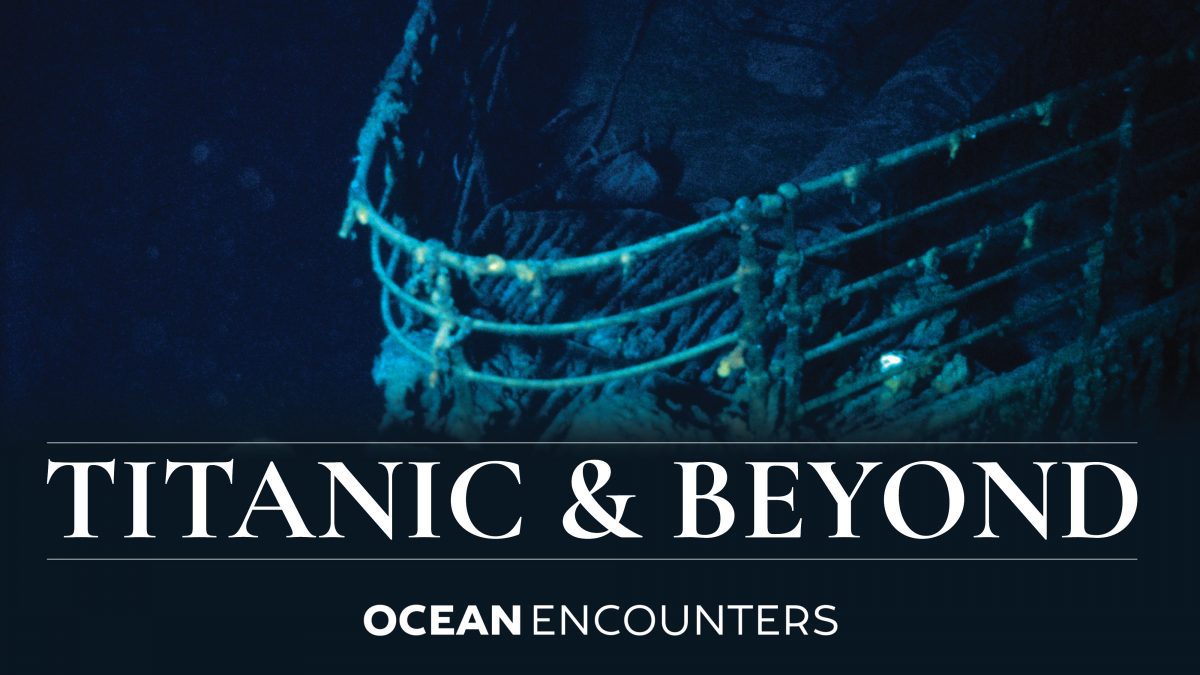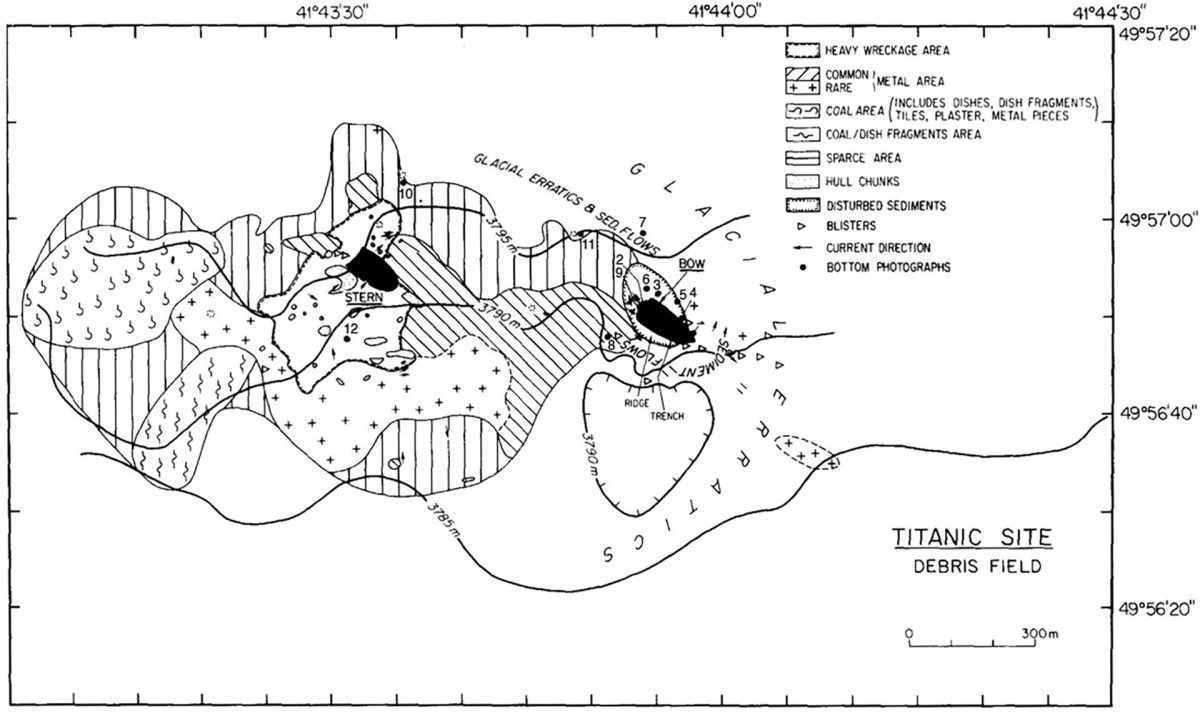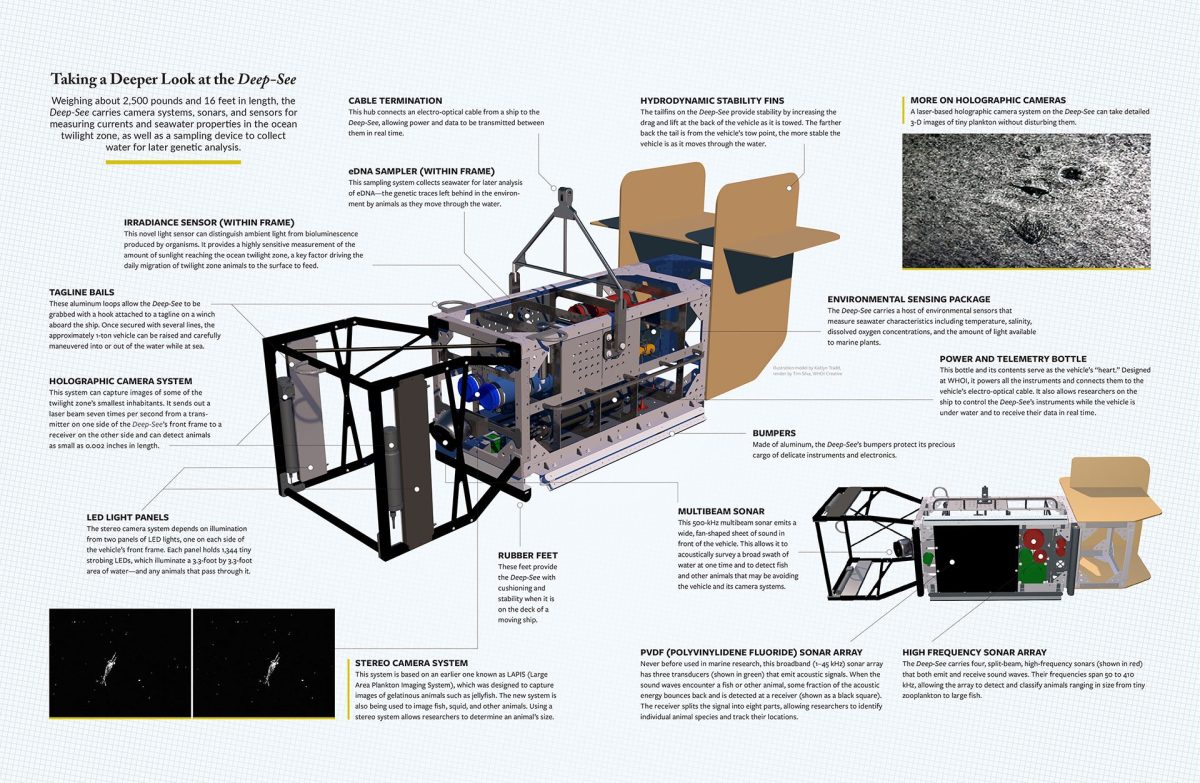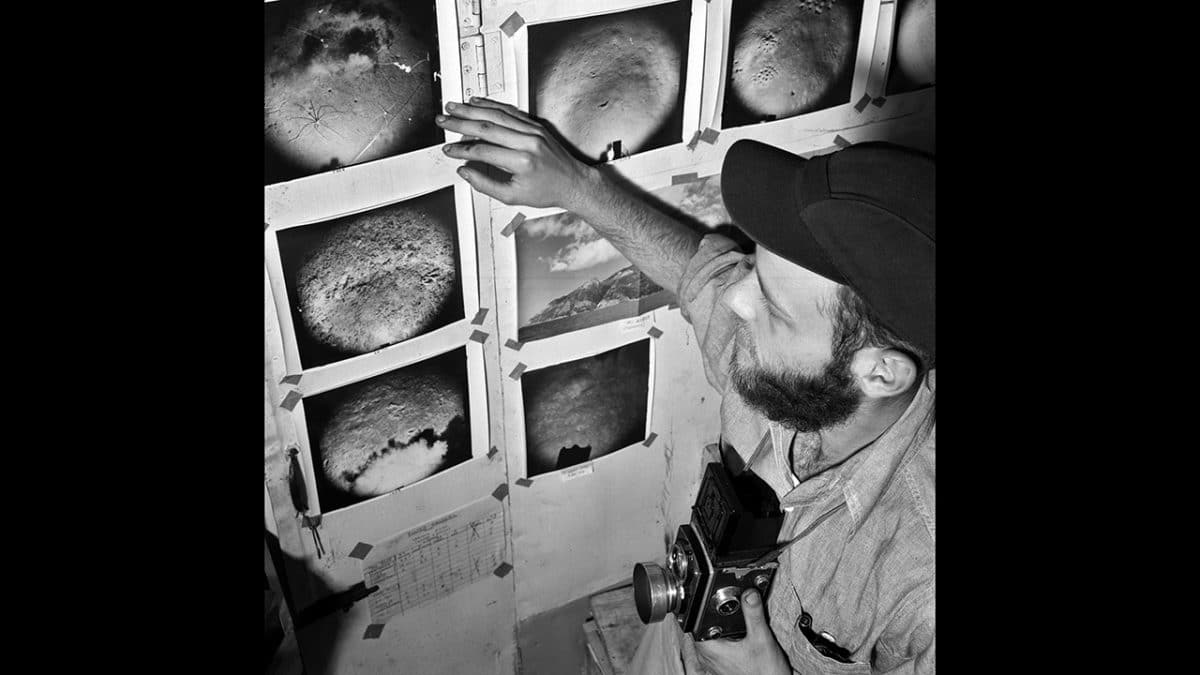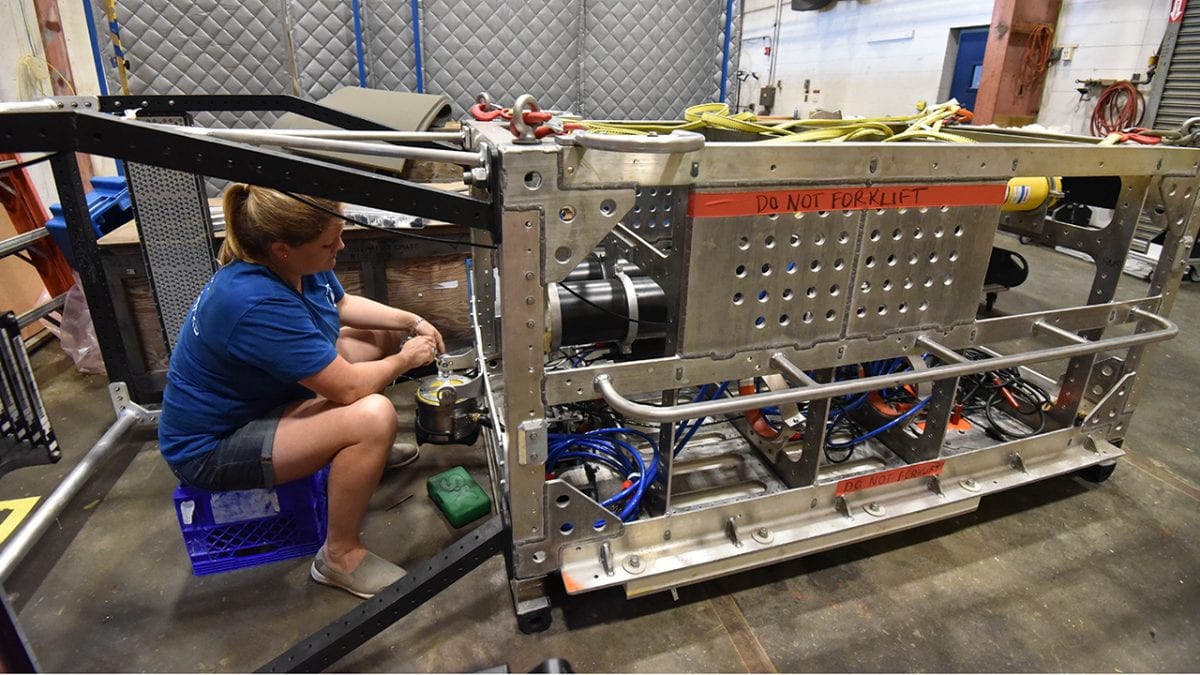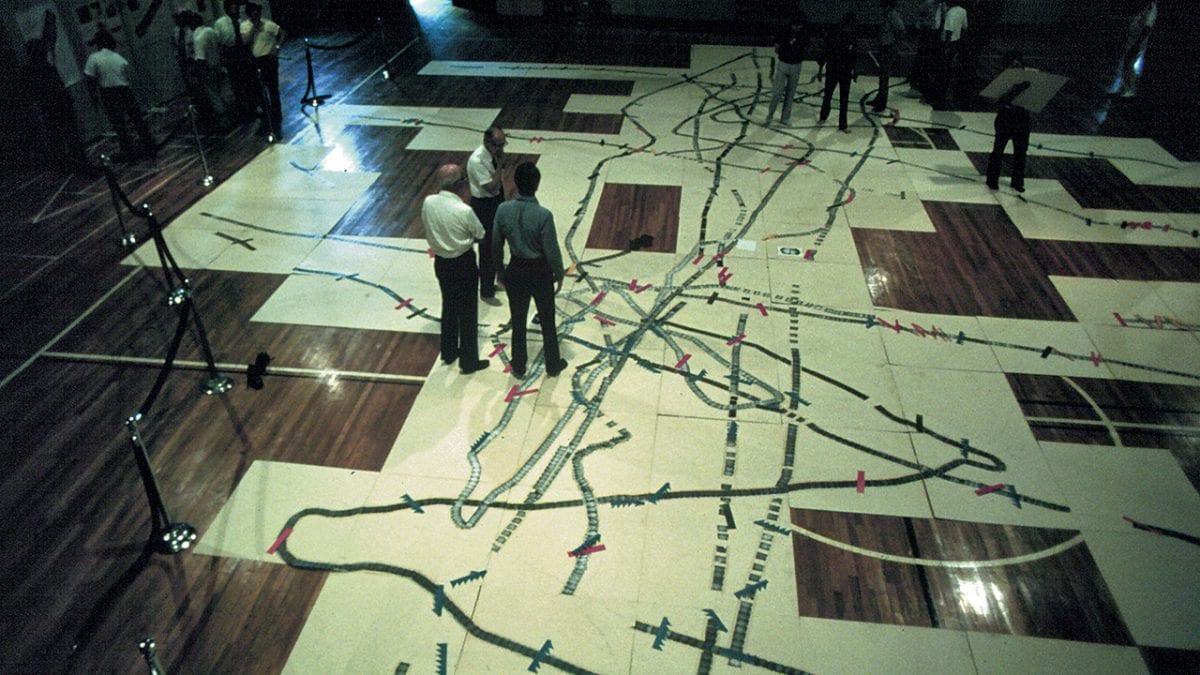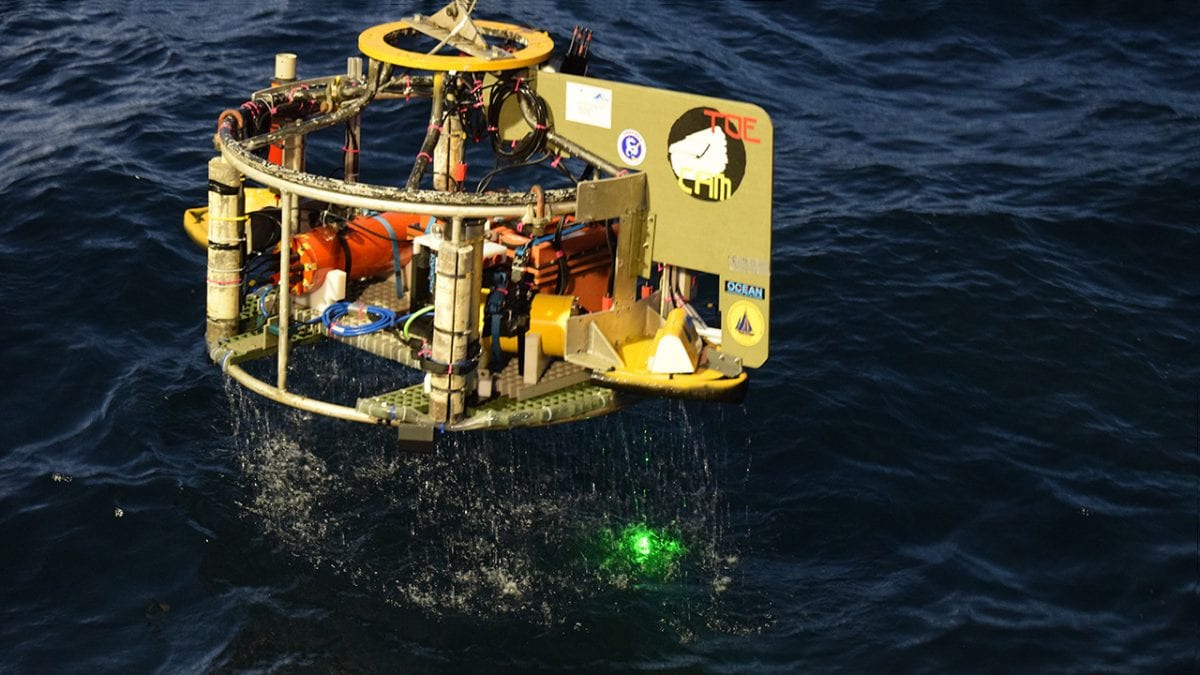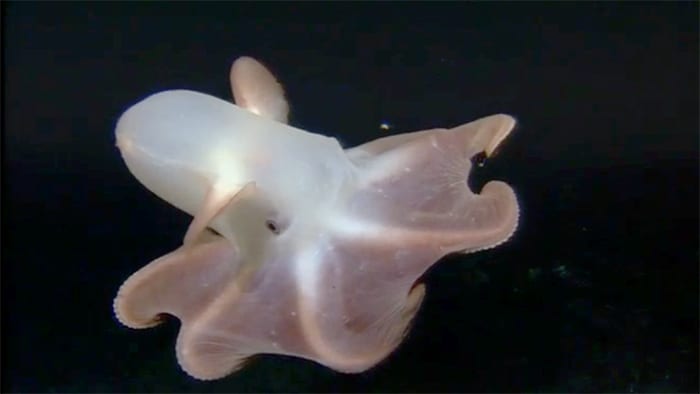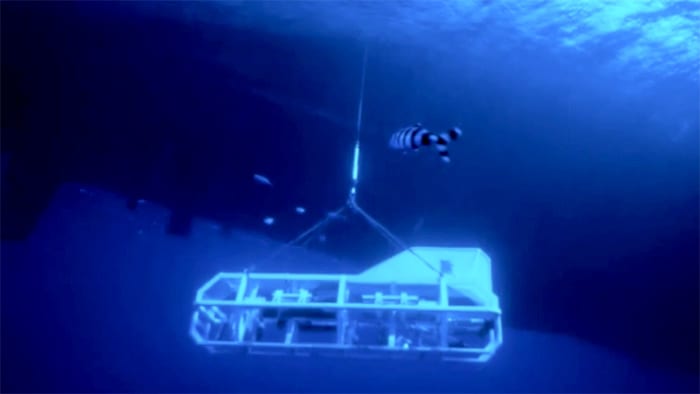In this section
Ocean Topics
- Climate & Weather
- How the Ocean Works
- Ocean & Human Lives
- Ocean Life
- Sustainable Ocean
- Ocean Tech
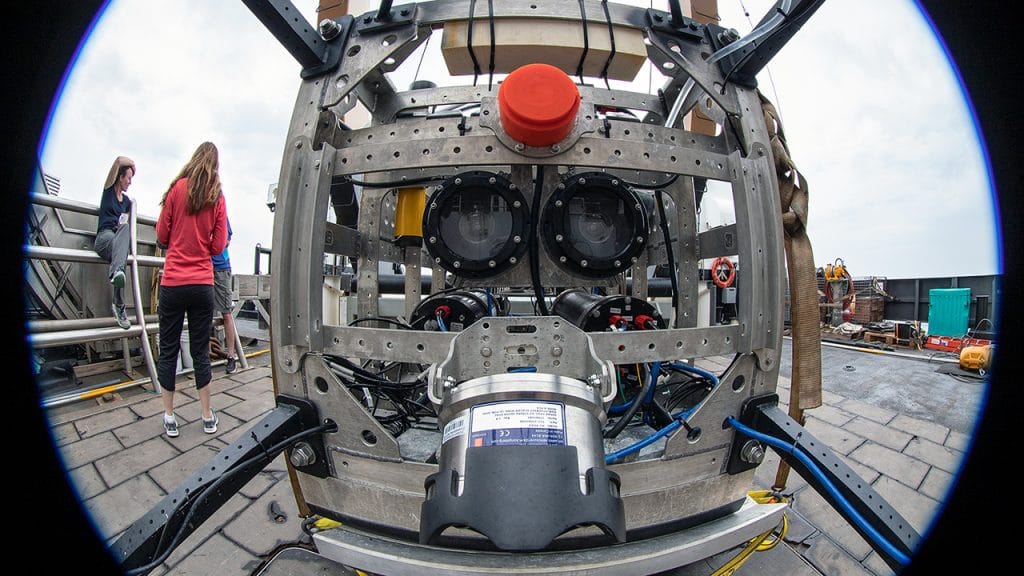
(Woods Hole Oceanographic Institution)
Ocean imaging combines science and technology to uncover and document what lies beneath the surface, from coastal areas to the deepest ocean trenches.
Researchers use advanced tools such as autonomous underwater vehicles (AUVs), remotely operated vehicles (ROVs), and high-resolution cameras to document marine life, underwater terrain, and geological events in real time. This imaging work supports a wide range of scientific endeavors — from tracking offshore wind infrastructure and surveying deep-sea eruptions to measuring methane seeps and monitoring endangered whales using thermal infrared cameras.
Innovations in lighting, sensors, and drone technology have even made it possible to observe elusive environments like the ocean’s twilight zone, or to study wildlife with minimal disturbance, as seen in aerial seal surveys.
Ocean imaging plays a critical role in advancing marine science by providing visual access to regions of the ocean that are otherwise difficult or impossible to study directly. Each image and video captured underwater provides rare and essential tools for documenting marine life, mapping seafloor features, and monitoring environmental change within Earth’s largest and least explored ecosystem.
Articles Related to Imaging
From Oceanus Magazine
How WHOI helped win World War II
Learning to see through cloudy waters
5 essential ocean-climate technologies
A curious robot is poised to rapidly expand reef research
A new way of “seeing” offshore wind power cables
New Techniques Open Window into Anatomy of Mollusks
The Deep-See Peers into the Depths
Re-envisioning Underwater Imaging
News Releases
Ship-mounted camera systems increase protections for marine mammals
Heidi Sosik Selected as a Fellow of The Oceanography Society
A Close-up Look at a Rare Underwater Eruption
Re-envisioning Underwater Imaging
Nereid Under Ice Vehicle: A Powerful New Tool for Polar Science
Establishing World-Class Coral Reef Ecosystem Monitoring in Okinawa
News & Insights
Stratus Mooring Q&A
HOV Alvin temporarily halts engineering test dives
Meet the Alvin 6500 Team: Drew Bewley
Ocean science into action
Meet the Alvin 6500 Team: Danik Forsman
Meet the Alvin 6500 Team: Lane Abrams
Meet the Alvin 6500 Team: Francis Elder
Could listening to the deep sea help save it?
WHOI in the News
A new satellite could help scientists unravel some of Earth’s mysteries. Here’s how
Sea Ahead
Decoding The Black Box: The 2015 US Disaster That Revolutionized Ship Crash Investigations
‘SharkCam’ films basking sharks off Scotland
Scientists returning to site of 1898 shipwreck off Mass. waters that killed more than 190 people
Penguins Are Nature’s Best Snugglers
Best of Constant Wonder
Scientists Team With Fishermen on Tracking Technology
Features

Ocean models are mathematical models of ocean properties and circulation, which helps us to better understand the ocean's influence on…
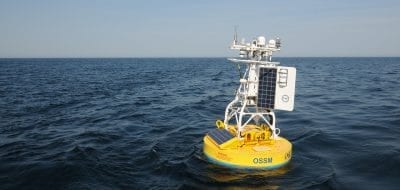
An oceanographic mooring consists of a long cable with an anchor at one end, a float at the other, and…
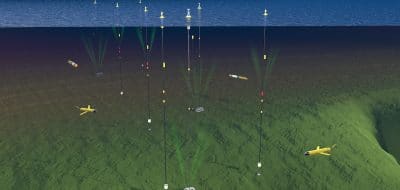
Ocean observatories have suites of instruments and sensors with long-term power supplies and permanent communications links that feed data in…

Oceanographers rely on sophisticated ships to get a firsthand look at the ocean environment and to carry their tools and…

Oceanographic observing tools has grown to include human-occupied submersibles, remote-controlled vehicles, and autonomous robots.

A strong understanding of how sound behaves in different conditions in the ocean helps scientists answer fundamental questions about the…
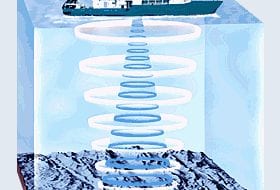
Echo sounding uses sound waves bounced off the ocean bottom to calculate depth. The faster the sound waves return, the…
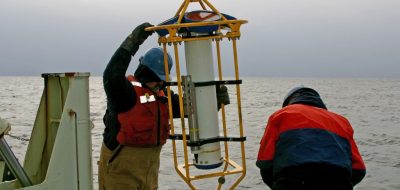
An Acoustic Doppler Current Profiler (ADCP) uses sound waves to measure water current speed at multiple depths, helping scientists study…
Related Links
Multidisciplinary Instrumentation in Support of Oceanography (MISO)
A community instrumentation facility for deep-sea digital imaging.

